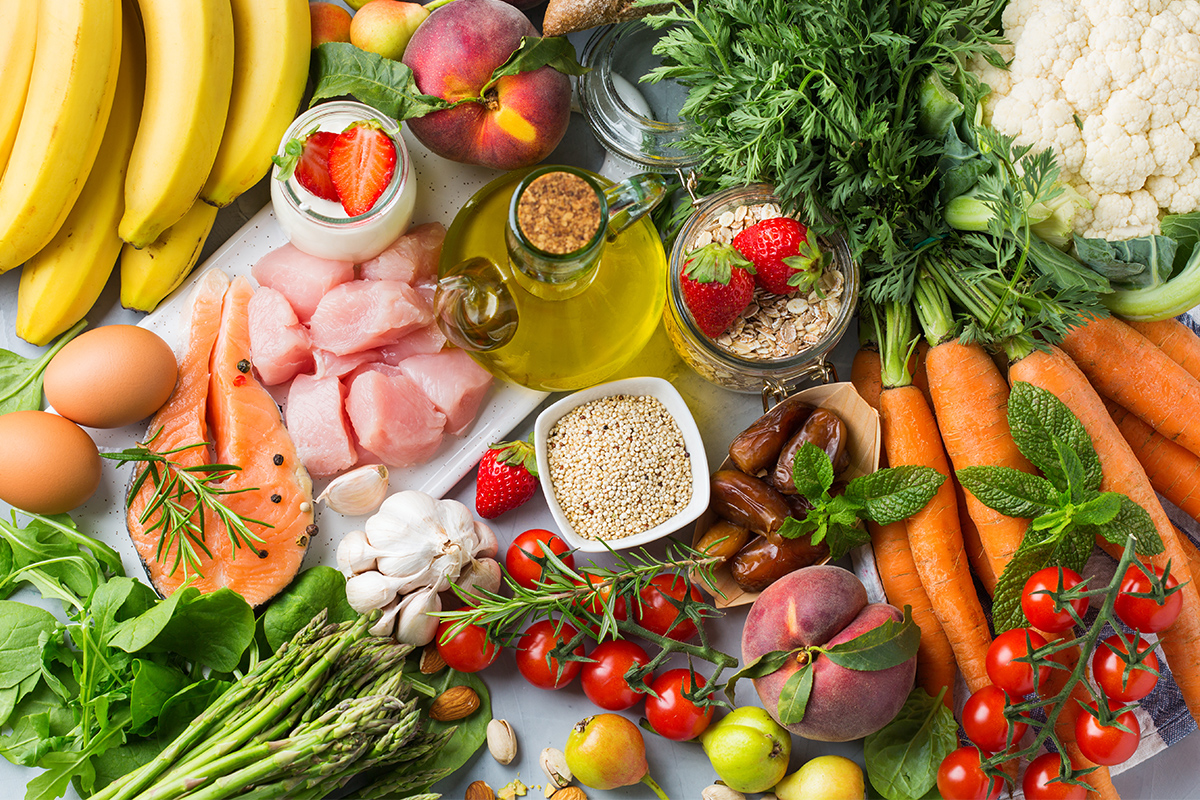Why am I Gaining Weight Despite Diet and Exercise? │ QA
If you’re careful with your nutrition, working out weekly, and still experiencing problems with your weight, take a moment to read this QA.


I work out in the morning about 5am every day. I also participate in intermittent fasting. My question is about the intake of protein. They say after a workout within about 30min you’re supposed to intake the protein, but that would break my fast (I eat at 11:30am every day). Should I break my fast or just be sure to intake enough protein within the day?
– Celeste C.

Choosing between the benefits of intermittent fasting and refueling post workout depend on your primary goals. Losing weight would dictate adhering to your time schedule for eating, while gaining strength or lean mass would necessitate repleting muscle building blocks in a timely manner. Endurance exercise repletion generally involves carbohydrate recovery – though protein helps. Really, we may only be talking about 50-75 calories or so from approximately 15 grams protein! If you think that would damage your fasting impact, then skip it. But doing so will certainly mean resistance workouts won’t have the maximum intended outcome.
– Debbie J., MS, RD
This article should not replace any exercise program or restrictions, any dietary supplements or restrictions, or any other medical recommendations from your primary care physician. Before starting any exercise program or diet, make sure it is approved by your doctor.
Some questions have been edited for length and/or clarity.
 Have a nutrition question? Our registered dietitian is ready to help!
Have a nutrition question? Our registered dietitian is ready to help!
Email nutrition@lafitness.com or submit your question below and it may be featured in an upcoming article!
If you’re careful with your nutrition, working out weekly, and still experiencing problems with your weight, take a moment to read this QA.
Blood sugar control isn’t easy. These are Debbie’s top recommendations for how to address weight control with Type II Diabetes.
Does Intermittent Fasting give you enough time to pack the day's protein? Our registered dietitian helps clear up the confusion!


I am a 59-year-old male who is still playing competitive soccer. – 2 x 45 minute halves each game. Any suggestions for a halftime snack to boost my 2nd half energy level?
– Joe B.

Bravo for keeping up your game! Many athletes experience a decline in energy level toward the end of a match, especially those lasting nearly 2 hours. Hopefully you are consuming a balanced meal a couple of hours prior, then a sports drink 5 to 10 minutes before kickoff. A halftime snack helps to postpone fatigue, stabilize blood sugar and keep up the pace during the second half.
Items with significant fat, fiber or protein — which slow digestion and thus blood glucose replenishment – should be avoided at this time. For that reason, even a flavored yogurt cup or granola bar may not be suitable.
A halftime snack should be comprised of carbohydrates, fluids and electrolytes. Examples include: watermelon slices, orange wedges, grapes, applesauce packet, half fruit bar + water, coconut water, and a sports hydration drink. Carbohydrate gels are another (more expensive) option.
Sources:
– Debbie J., MS, RD
This article should not replace any exercise program or restrictions, any dietary supplements or restrictions, or any other medical recommendations from your primary care physician. Before starting any exercise program or diet, make sure it is approved by your doctor.
Some questions have been edited for length and/or clarity.
 Have a nutrition question? Our registered dietitian is ready to help!
Have a nutrition question? Our registered dietitian is ready to help!
Email nutrition@lafitness.com or submit your question below and it may be featured in an upcoming article!
If you’re careful with your nutrition, working out weekly, and still experiencing problems with your weight, take a moment to read this QA.
Blood sugar control isn’t easy. These are Debbie’s top recommendations for how to address weight control with Type II Diabetes.
Does Intermittent Fasting give you enough time to pack the day's protein? Our registered dietitian helps clear up the confusion!


My husband and I are thinking about having a baby, what is a good nutrition guide to follow when pregnant?
-Misty

How wonderful! Why not follow a smart pre-conception diet now? Laying down a good nutritional foundation means that you’ll not only increase the likelihood of conceiving but also of a healthy first trimester – for you as well as the baby. Get hubby on board, too. ?
Many “conception diets” recommend that half your plate be from fruits and vegetables, a quarter from whole grains and a quarter lean protein, which agrees with USDA’s Choose MyPlate guidelines. If you’re trying to get pregnant, drinking reduced or whole fat milk is correlated with normal fertility, but not 1% or skim (non-fat). Consume healthy plant-based fats like avocado, nuts, olives and coconut oil in moderation. Limit refined sugar, red meat and foods containing trans-fat.
As many women don’t know they are carrying a baby until several weeks into pregnancy, taking a prenatal vitamin with 100% RDI of folic acid (400 µg folate equivalent) and iron (18 mg) is advisable. Many produce items (notably spinach, asparagus, Brussel sprouts) have the B-vitamin folate, necessary for early neural tube development. Dietary sources of the important blood mineral iron include meat, fortified cereals, beans, and dark green leafy vegetables.
During pregnancy, follow your obstetrician’s advice and that from established and trusted institutions such as The American College of Obstetricians and Gynecologists (ACOG), The Academy of Nutrition and Dietetics (AND), and The US Office on Women’s Health (OWH).
You’ll need extra fluids, nutrients and calories as your pregnancy progresses. In the first trimester, folate and other vitamins and minerals are crucial for proper neural tube development, so a good prenatal vitamin is key. Strictly avoid alcohol during this time.
The second trimester is when you start to expand blood volume and increase maternal stores while your baby grows rapidly from the size of a nut (3”, 1 oz.) to a football (12”, 1 lb.) while developing all of its organs and features. About 2 additional cups of fluids are needed per day. Adding around 300 extra calories from healthy foods with adequate calcium and iron will support this growth.
In the last trimester, your baby is filling out to full-term weight. This is when you are truly “eating for two, ” although in terms of energy, you really only need an additional 200 calories on top of your 2nd trimester needs.
Sources:
– Debbie J., MS, RD
This article should not replace any exercise program or restrictions, any dietary supplements or restrictions, or any other medical recommendations from your primary care physician. Before starting any exercise program or diet, make sure it is approved by your doctor.
Some questions have been edited for length and/or clarity.
 Have a nutrition question? Our registered dietitian is ready to help!
Have a nutrition question? Our registered dietitian is ready to help!
Email nutrition@lafitness.com or submit your question below and it may be featured in an upcoming article!
If you’re careful with your nutrition, working out weekly, and still experiencing problems with your weight, take a moment to read this QA.
Blood sugar control isn’t easy. These are Debbie’s top recommendations for how to address weight control with Type II Diabetes.
Does Intermittent Fasting give you enough time to pack the day's protein? Our registered dietitian helps clear up the confusion!


Hi, my name is Nigel and I was wondering if you could help me with eating tips for someone trying to clean bulk. Thanks.
– Nigel A.

As a dietitian I interpret your inquiry as you’d like advice for bulking up on strictly a ‘clean’ diet. Bulking up without gaining fat pretty much means eating a clean diet, anyway.
Clean foods – those that are raw or minimally processed – include energy dense foods like avocados, banana, coconut, fatty fish, meats, nuts, extra virgin olive oil, poultry dark meat, seed butters, and soybeans which can help you put on weight. Muscle weight if resistance training consistently, of course. Starchy vegetables like corn, potatoes, peas and winter squash and (naturally) dried fruit provide more energy per bite than watery ones. Other higher calorie foods (by weight) such as granola/trail mix, pesto and cottage cheese can be made from scratch if raw/unprocessed is desired. Incorporating eggs and quinoa helps to keep protein intake up.
Resources:
– Debbie J., MS, RD
This article should not replace any exercise program or restrictions, any dietary supplements or restrictions, or any other medical recommendations from your primary care physician. Before starting any exercise program or diet, make sure it is approved by your doctor.
Some questions have been edited for length and/or clarity.
 Have a nutrition question? Our registered dietitian is ready to help!
Have a nutrition question? Our registered dietitian is ready to help!
Email nutrition@lafitness.com or submit your question below and it may be featured in an upcoming article!
If you’re careful with your nutrition, working out weekly, and still experiencing problems with your weight, take a moment to read this QA.
Blood sugar control isn’t easy. These are Debbie’s top recommendations for how to address weight control with Type II Diabetes.
Does Intermittent Fasting give you enough time to pack the day's protein? Our registered dietitian helps clear up the confusion!


What is the best type of recovery drink that can help my muscles recover quicker from exercising?
– David A.

The optimum content of your recovery drink depends on the type of exercise, intensity and duration.
Stop by your club’s juice bar to see what’s likely to fit into your recovery nutrition. No matter what you choose, remember to consider portion/energy since some shakes can contain over 300 calories and may surpass what was burned during the exercise!
– Debbie J., MS, RD
This article should not replace any exercise program or restrictions, any dietary supplements or restrictions, or any other medical recommendations from your primary care physician. Before starting any exercise program or diet, make sure it is approved by your doctor.
Some questions have been edited for length and/or clarity.
 Have a nutrition question? Our registered dietitian is ready to help!
Have a nutrition question? Our registered dietitian is ready to help!
Email nutrition@lafitness.com or submit your question below and it may be featured in an upcoming article!
If you’re careful with your nutrition, working out weekly, and still experiencing problems with your weight, take a moment to read this QA.
Blood sugar control isn’t easy. These are Debbie’s top recommendations for how to address weight control with Type II Diabetes.
Does Intermittent Fasting give you enough time to pack the day's protein? Our registered dietitian helps clear up the confusion!
Be the first to know about exclusive
content, deals and promotions